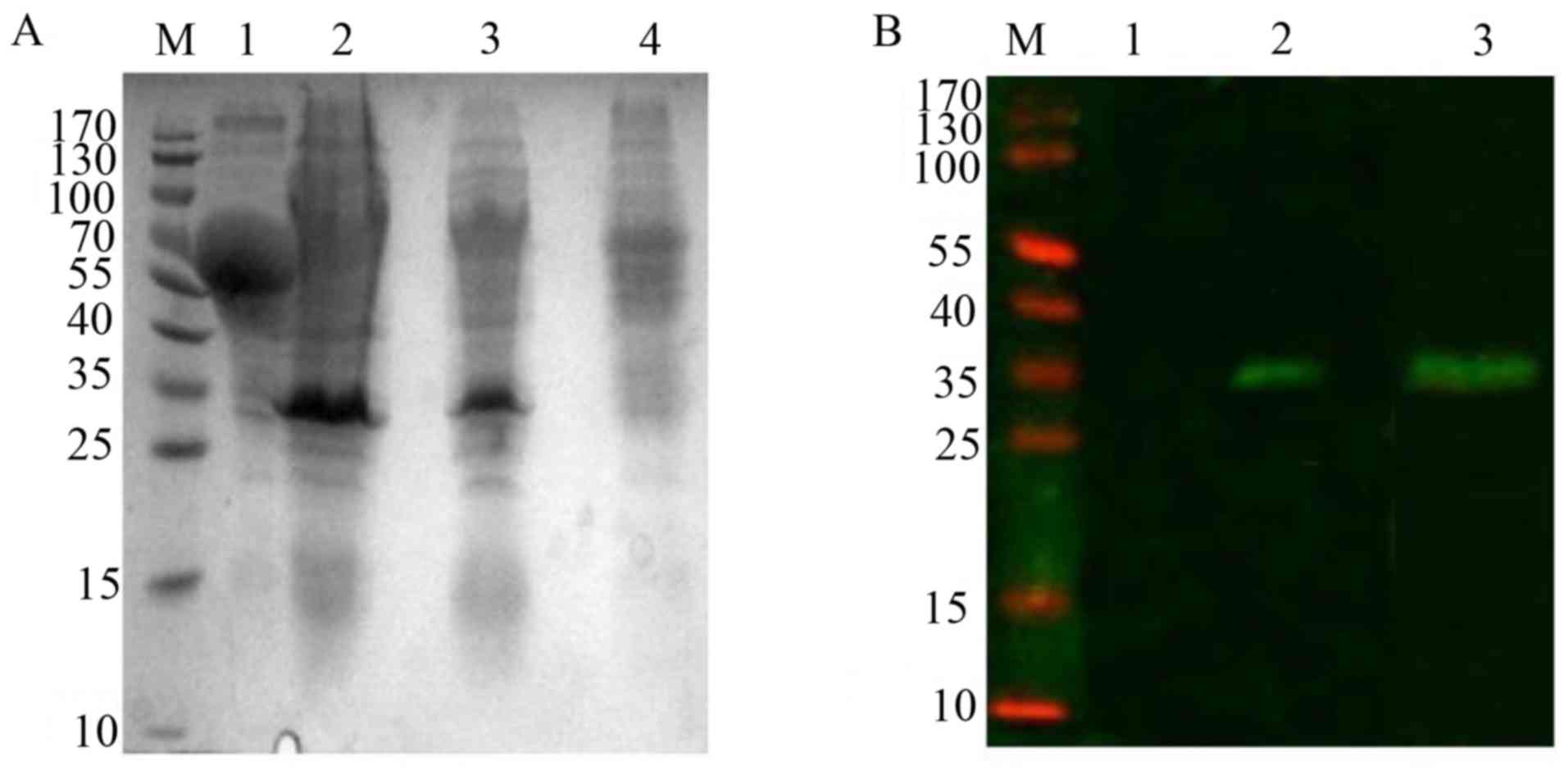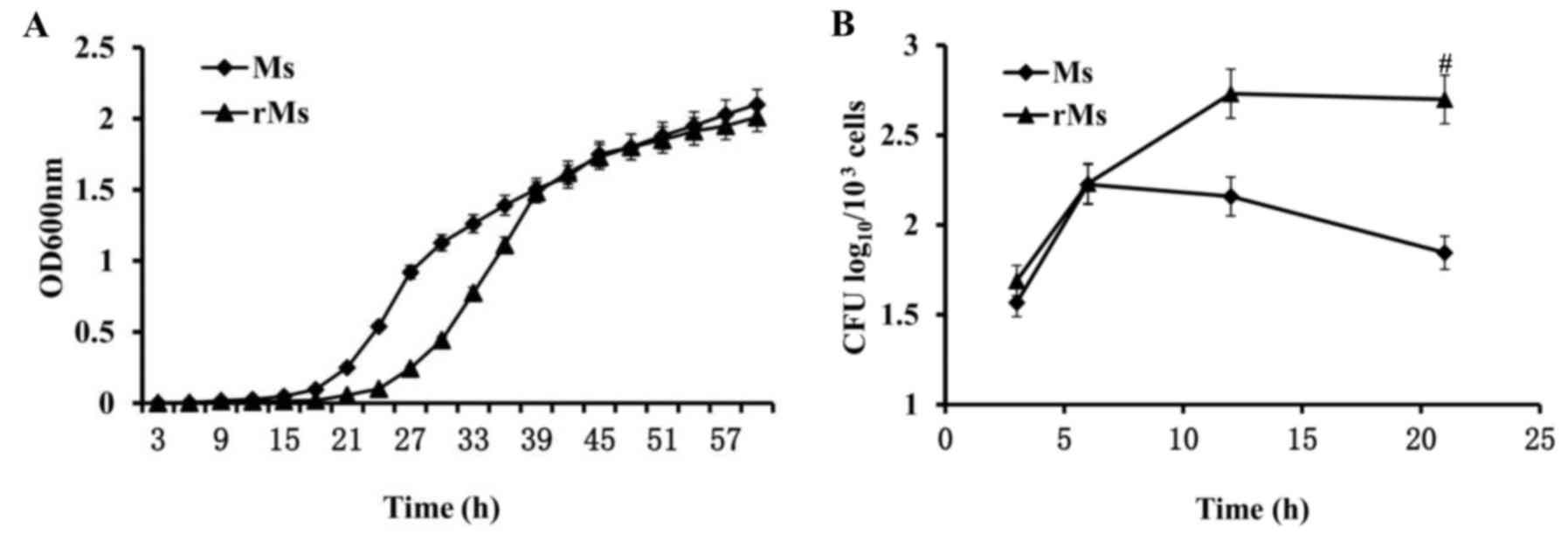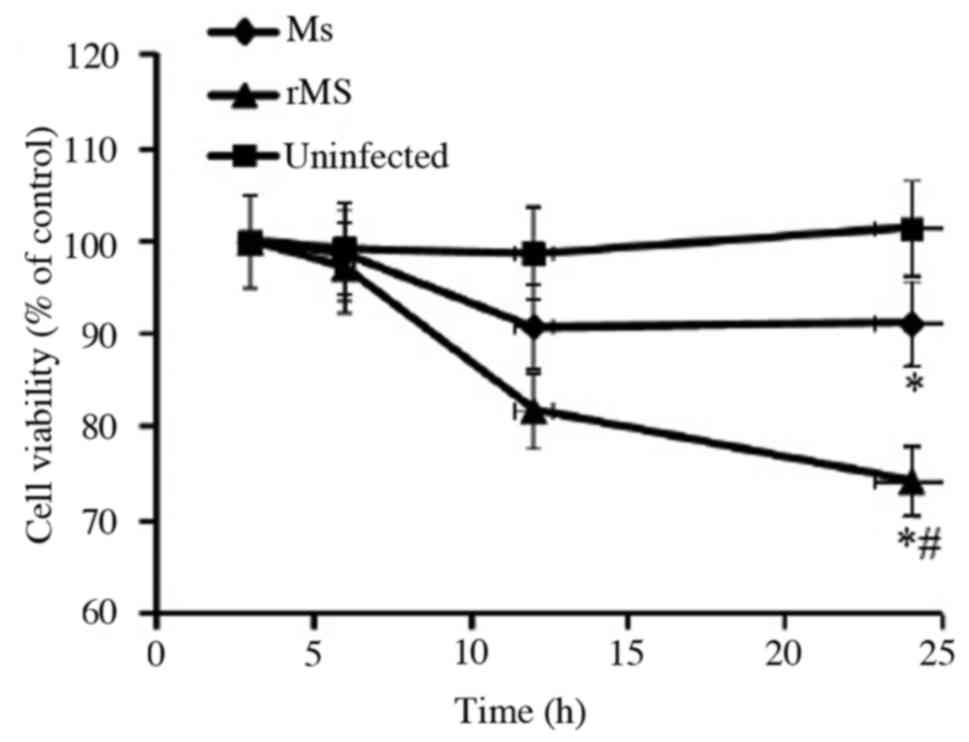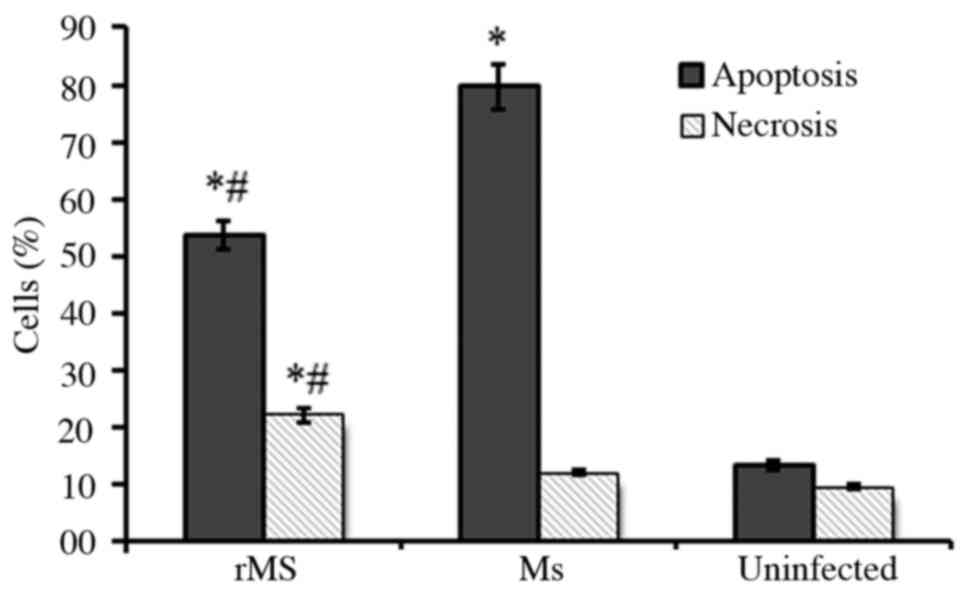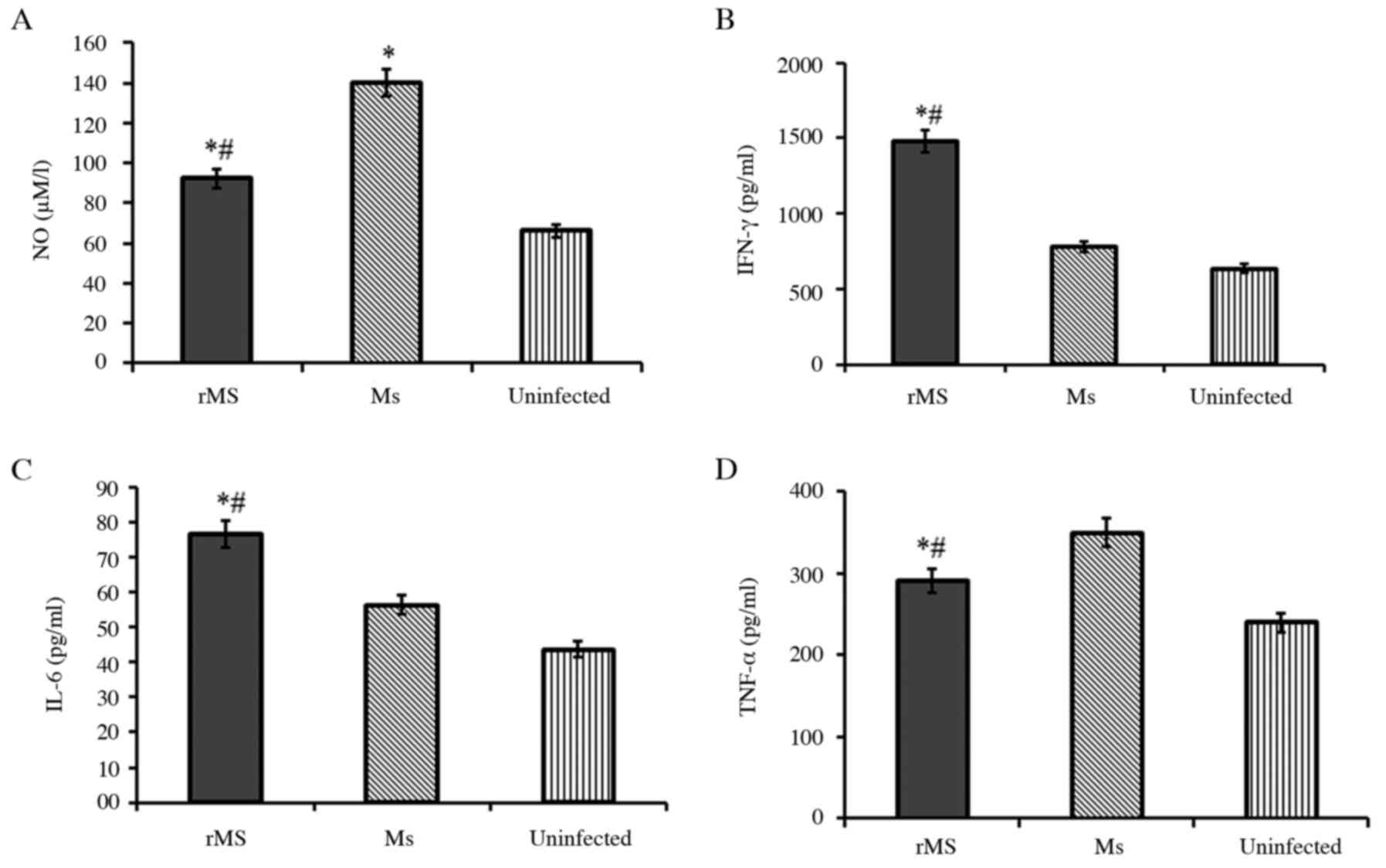|
1
|
World Health Organization (WHO): Global
Tuberculosis Report. WHO; Geneva: pp. 2042015
|
|
2
|
Gideon HP and Flynn JL: Latent
tuberculosis: What the host ‘sees’? Immunol Res. 50:202–212. 2011.
View Article : Google Scholar : PubMed/NCBI
|
|
3
|
Liu PT and Modlin RL: Human macrophage
host defense against Mycobacterium tuberculosis. Curr Opin
Immunol. 20:371–376. 2008. View Article : Google Scholar : PubMed/NCBI
|
|
4
|
Gerasimova A, Kazakov AE, Arkin AP,
Dubchak I and Gelfand MS: Comparative genomics of the dormancy
regulons in mycobacteria. J Bacteriol. 193:3446–3452. 2011.
View Article : Google Scholar : PubMed/NCBI
|
|
5
|
Yuan Y, Crane DD and Barry CE III:
Stationary phase-associated protein expression in Mycobacterium
tuberculosis: function of the mycobacterial alpha-crystallin
homolog. J Bacteriol. 178:4484–4492. 1996. View Article : Google Scholar : PubMed/NCBI
|
|
6
|
de Souza GA1, Arntzen MØ, Fortuin S,
Schürch AC, Målen H, McEvoy CR, van Soolingen D, Thiede B, Warren
RM and Wiker HG: Proteogenomic analysis of polymorphisms and gene
annotation divergences in prokaryotes using aclustered mass
spectrometry-friendly database. Mol Cell Proteomics.
10:M110.0025272011. View Article : Google Scholar : PubMed/NCBI
|
|
7
|
Yuan Y, Crane DD, Simpson RM, Zhu YQ,
Hickey MJ, Sherman DR and Barry CE III: The 16-kDa alpha-crystallin
(Acr) protein of Mycobacterium tuberculosis is required for
growth in macrophages. Proc Natl Acad Sci USA. 95:pp. 9578–9583.
1998; View Article : Google Scholar : PubMed/NCBI
|
|
8
|
Rosenkrands I, Slayden RA, Crawford J,
Aagaard C, Barry CE III and Andersen P: Hypoxic response of
Mycobacterium tuberculosis studied by metabolic labeling and
proteome analysis of cellular and extracellular proteins. J
Bacteriol. 184:3485–3491. 2002. View Article : Google Scholar : PubMed/NCBI
|
|
9
|
Gao H, Bai Y, Xue Y, Wang L, Fan A, Ding X
and Xu Z: Expression, purification, and characterization of soluble
RpfD with high bioactivity as a recombinant protein in
Mycobacterium vaccae. Protein Expr Purif. 55:112–118. 2007.
View Article : Google Scholar : PubMed/NCBI
|
|
10
|
Boon C and Dick TP: How Mycobacterium
tuberculosis goes to sleep: The dormancy survival regulator DosR a
decade later. Future Microbiol. 7:513–518. 2012. View Article : Google Scholar : PubMed/NCBI
|
|
11
|
Singh S, Saraav I and Sharma S:
Immunogenic potential of latency associated antigens against
Mycobacterium tuberculosis. Vaccine. 32:712–716. 2014.
View Article : Google Scholar : PubMed/NCBI
|
|
12
|
Serra-Vidal MM, Latorre I, Franken KL,
Díaz J, de Souza-Galvão ML, Casas I, Maldonado J, Milà C, Solsona
J, Jimenez-Fuentes MÁ, et al: Immunogenicity of 60 novel
latency-related antigens of Mycobacterium tuberculosis.
Front Microbiol. 5:5172014. View Article : Google Scholar : PubMed/NCBI
|
|
13
|
Hu Y, Movahedzadeh F, Stoker NG and Coates
AR: Deletion of the Mycobacterium tuberculosis
alpha-crystallin-like hspX gene causes increased bacterial growth
in vivo. Infect Immun. 74:861–868. 2006. View Article : Google Scholar : PubMed/NCBI
|
|
14
|
Srinivasan L, Ahlbrand S and Briken V:
Interaction of Mycobacterium tuberculosis with host cell death
pathways. Cold Spring Harb Perspect Med. 4:pii: a022459. 2014.
View Article : Google Scholar : PubMed/NCBI
|
|
15
|
Fratazzi C, Arbeit RD, Carini C,
Balcewicz-Sablinska MK, Keane J, Kornfeld H and Remold HG:
Macrophage apoptosis in mycobacterial infections. J Leukoc Biol.
66:763–764. 1999. View Article : Google Scholar : PubMed/NCBI
|
|
16
|
Ferrari CK, Souto PC, França EL and
Honorio-França AC: Oxidative and nitrosative stress on phagocytes'
function: From effective defense to immunity evasion mechanisms.
Arch Immunol Ther Exp (Warsz). 59:441–448. 2011. View Article : Google Scholar : PubMed/NCBI
|
|
17
|
O'Garra A, Redford PS, McNab FW, Bloom CI,
Wilkinson RJ and Berry MP: The immune response in tuberculosis.
Annu Rev Immunol. 31:475–527. 2013. View Article : Google Scholar : PubMed/NCBI
|
|
18
|
Beham AW, Puellmann K, Laird R, Fuchs T,
Streich R, Breysach C, Raddatz D, Oniga S, Peccerella T, Findeisen
P, et al: A TNF-regulated recombinatorial macrophage immune
receptor implicated in granuloma formation in tuberculosis. PLoS
Pathog. 7:e10023752011. View Article : Google Scholar : PubMed/NCBI
|




